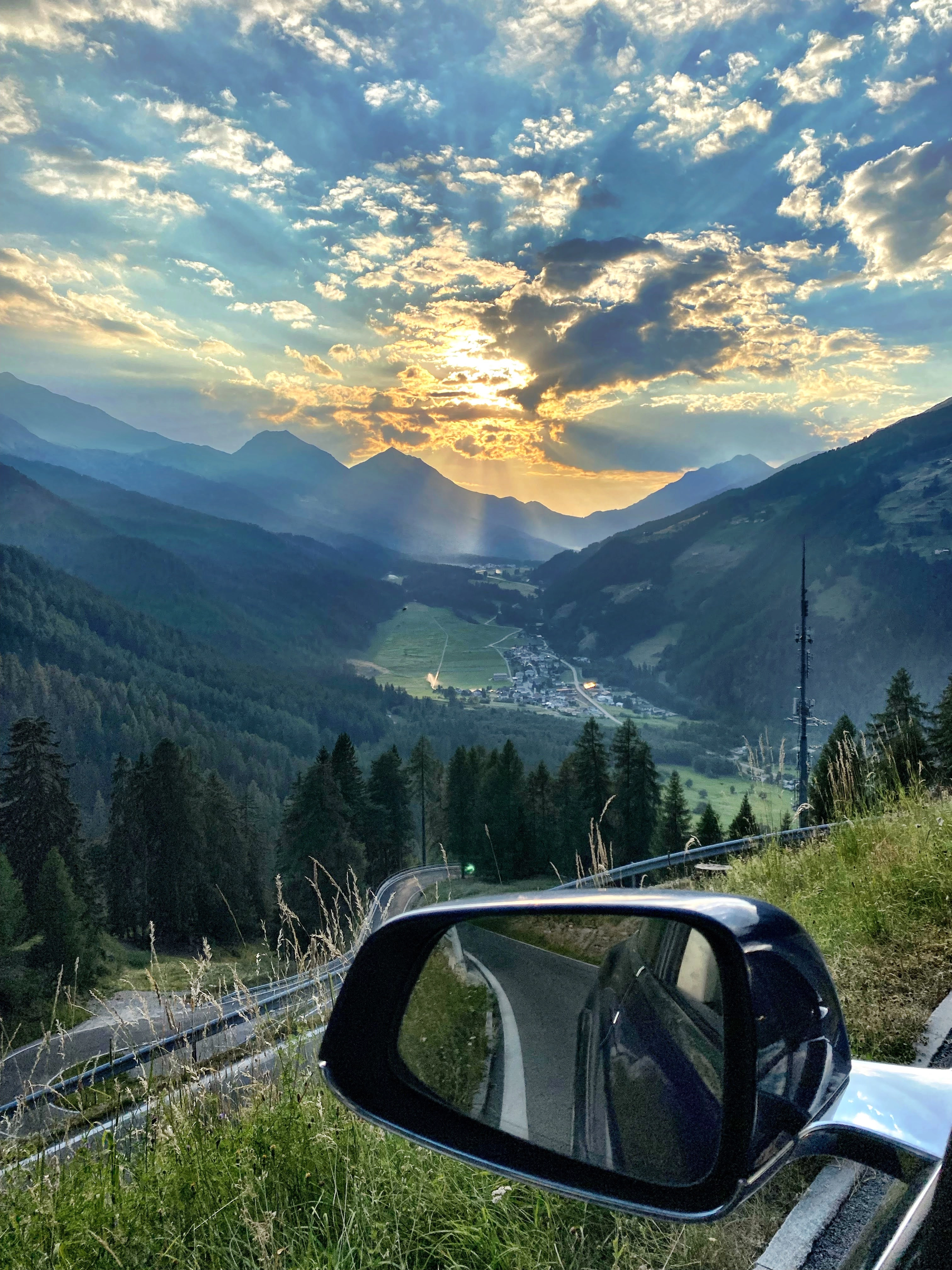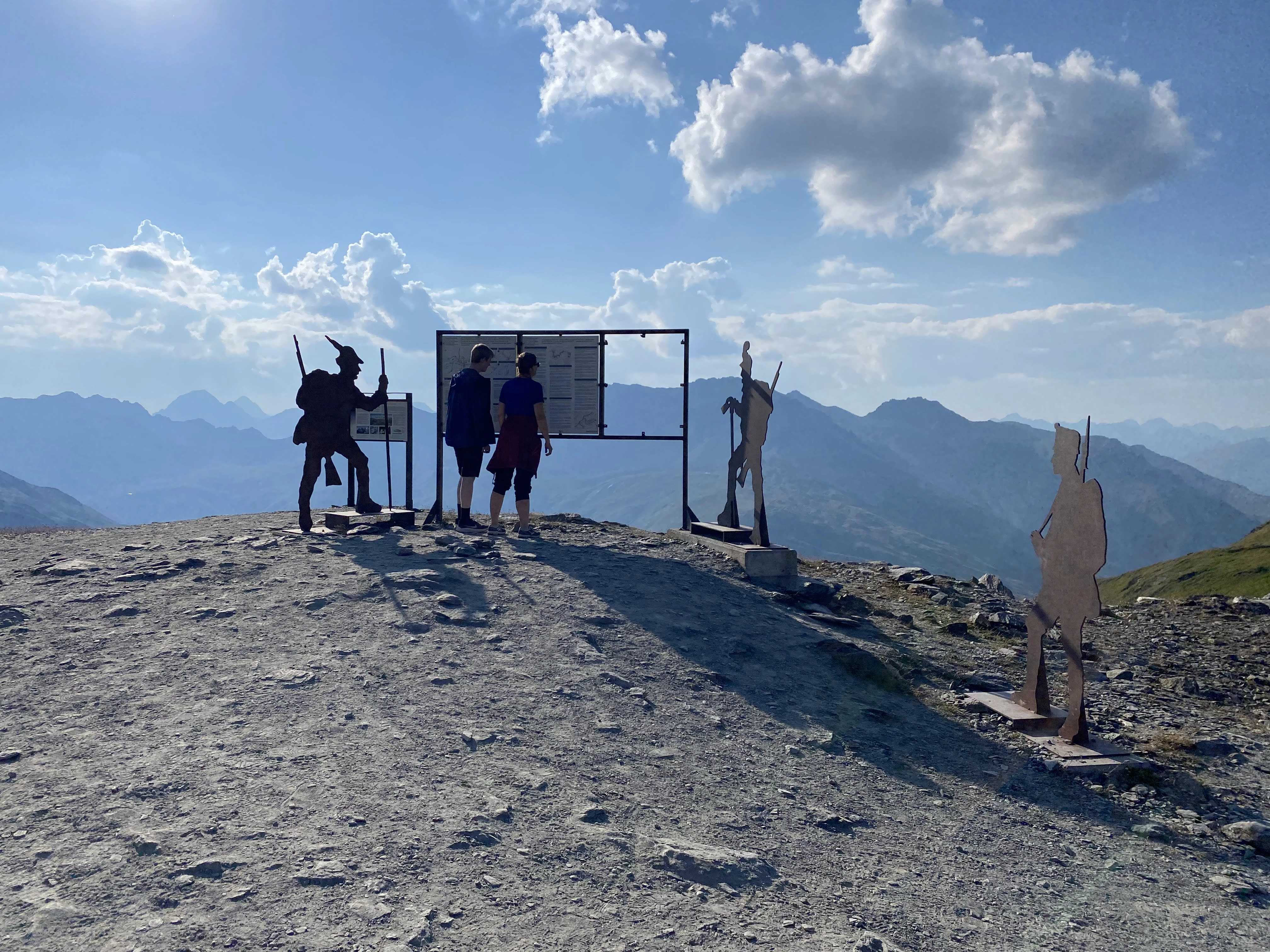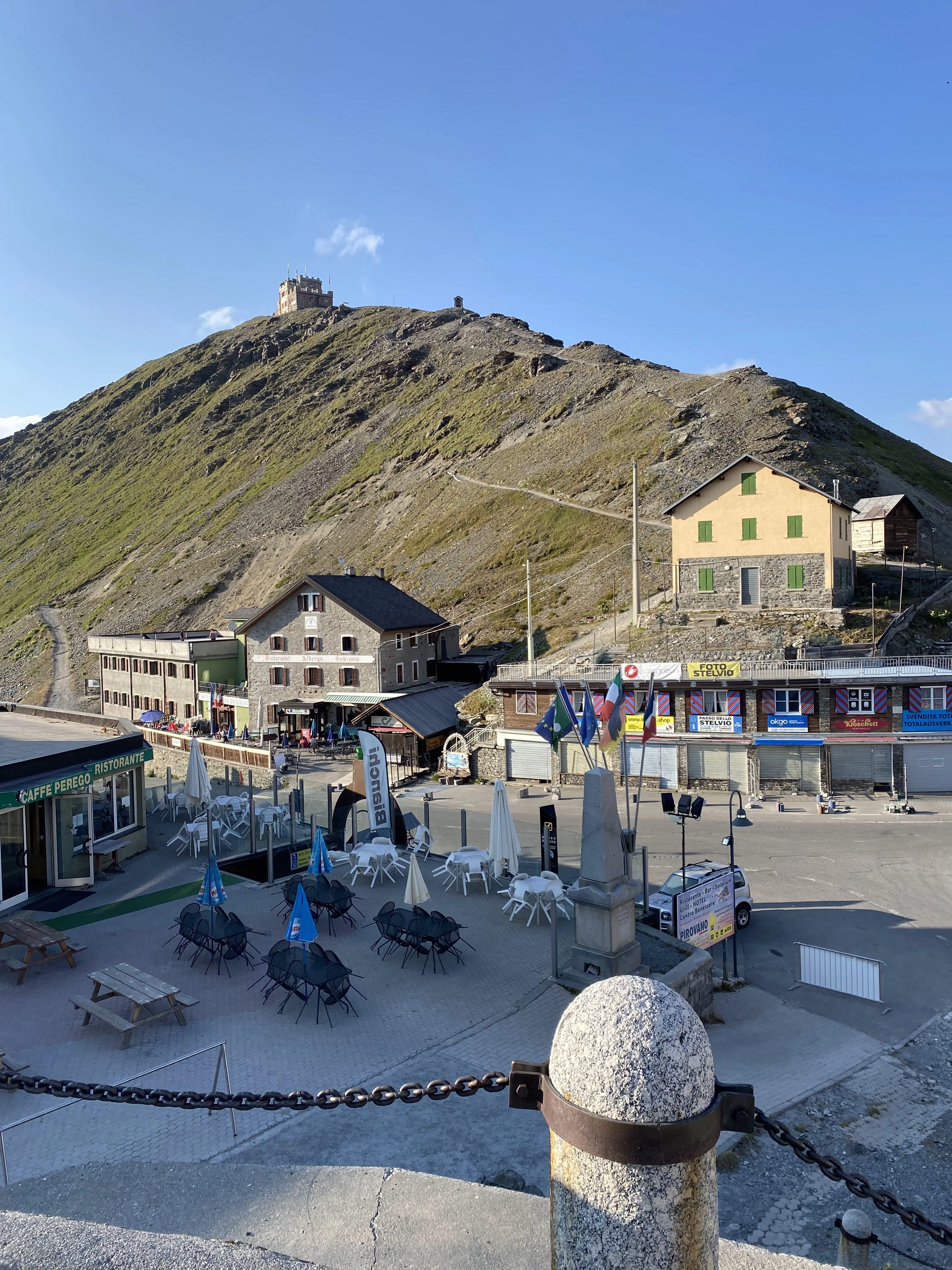When your job revolves around the road, you end up spending countless hours on motorways. Long, straight stretches in four lanes, with cars moving at the same speed in the same direction. Efficient, sure. But spectacular? Not quite. Even the roadside cafés start to feel the same after a few thousand kilometers.

That's why I've come to love mountain passes – especially in the Alps. There's a whole different kind of driving to be found there. It's demanding, it's beautiful, and it gives you a sense of accomplishment like nothing else. And there's almost always a scenic pullout where you can catch your breath and take in a view that quite literally takes your breath away. One of the most spectacular and content-rich passes I've driven is the Stelvio Pass.
Stelvio – Curves, Altitude and History
The Stelvio Pass (Passo dello Stelvio) lies on the border between northern Italy and Switzerland and winds its way up to 2757 meters above sea level. It's only open during the summer, but when it is, it offers a dramatic blend of natural beauty, engineering marvels and adrenaline.
A Road Built to Unite Empires
Its history makes it even more fascinating. The road was built between 1820 and 1825 by the Austrian Empire, which at the time controlled large parts of northern Italy. The goal was to connect Austria with Lombardy, and the pass quickly became a technical masterpiece of its time. More than 75 hairpin turns were carved into the mountainsides – many of them still in use today in their original form.

Stelvio has also played a strategic role. During both World Wars, the area was marked by military activity, and you can still spot remnants of old military posts and lookout stations in the mountains. Today, it's mostly cyclists, driving enthusiasts and curious travelers who climb the pass for the experience.
Stelvio and Cima Coppi – A Legendary Name in Cycling
Stelvio isn't only known among drivers and geocachers. It's a legendary name in the cycling world. In the famous Giro d’Italia race, Stelvio is often the highest point of the route – and when it is, it goes by a special name: Cima Coppi.
The name is a tribute to Fausto Coppi, one of the greatest cyclists Italy has ever seen. Coppi won the Giro five times and became a national hero after World War II. To honor his legacy, the Cima Coppi title was introduced in 1965 and is awarded each year to the highest point of the Giro d’Italia.
Whenever Stelvio is included in the race, it nearly always becomes the Cima Coppi – with its 2757 meters, it's one of the highest paved mountain passes in Europe accessible by bike. Climbing it by car is an effort. By bike, it's a feat of endurance.
That gives the pass an extra dimension. As you drive (or cycle!) up the endless switchbacks, you're tracing the path of some of the toughest athletes in the world – and it gives you a newfound respect for both the road and those who conquer it with muscle power alone.
A Geocacher's Playground
What makes Stelvio even more enjoyable is its rich selection of geocaches. There are traditional caches, mysteries and EarthCaches that bring geology and history into your journey. One EarthCache we found was owned by someone who was clearly both a beer enthusiast and a geologist – a combo that really resonated with the family. He explained how the surrounding mountains were formed by tectonic shifts, and which direction the forces pushed the rock over millions of years. Fascinating, and surprisingly accessible.

The Forgotten Cache and the Province Challenge
One highlight was a challenge cache requiring you to log a cache in three different provinces. It’s easier than it sounds, as the border between Italy and Switzerland runs right through the area. But on our first visit, it got dark and stressful, and I completely forgot to grab the final province. It actually took me two years to return and complete the province challenge properly. A good excuse for a return trip.

Driving the Pass – A Sea of Switchbacks
The Stelvio Pass is famous for its hairpin turns. How many? I'm not sure. But it feels like hundreds. The road is narrow, the turns are sharp, and the views are spectacular. It’s easy to see why motorcyclists love this route – though you might grow tired of turning after a while.
We didn’t stop often along the way, but we made time for the essentials: awe-inspiring views, crisp mountain air – and an ice-cold soda at a local café. So many great moments. Especially with a GPS in hand.
Geocaching Above 2750 Meters
For geocachers, Stelvio Pass is a high-altitude playground – literally. Over 2750 meters above sea level, you'll find a range of caches combining scenery, physical effort and educational value:
🌍 GC5H307 – Stelvio Pass Earthcache: A stunning EarthCache that explains how the area rose due to tectonic plate movement. Located at the tri-border area of Italy, Austria and Switzerland.
📸 GC8904V – Stelvio - the second highest paved pass: A virtual cache that's easy to log and rewards you with an iconic view of the winding road.
📬 GC4ZZ0G – Stelvio Pass Letterbox: A straightforward Letterbox Hybrid that’s a nice addition to any collection.
🚴 GC6TNXG – Cima Coppi: A Mystery Cache honoring the legendary Cima Coppi and tying into the cycling history of the area.
🔍 GC5000M – Stelvio Multi-Cache: Easy to solve, harder to find – a classic multi in the mountains.
🧭 GC8YQ35 – Stelvio Adventure: A simple and enjoyable Wherigo with a few checkpoints.
Finding caches at this altitude offers a special kind of thrill – not just for the elevation, but for the blend of adventure, education and breathtaking views.
In Summary
The Stelvio Pass is more than just a road through the mountains. It’s a journey in its own right. An adventure at 2757 meters above sea level. It leaves you with sweaty palms, big smiles and memories that linger long after you’ve descended. For me, it’s not a question of whether I’ll return – only when.





Comments